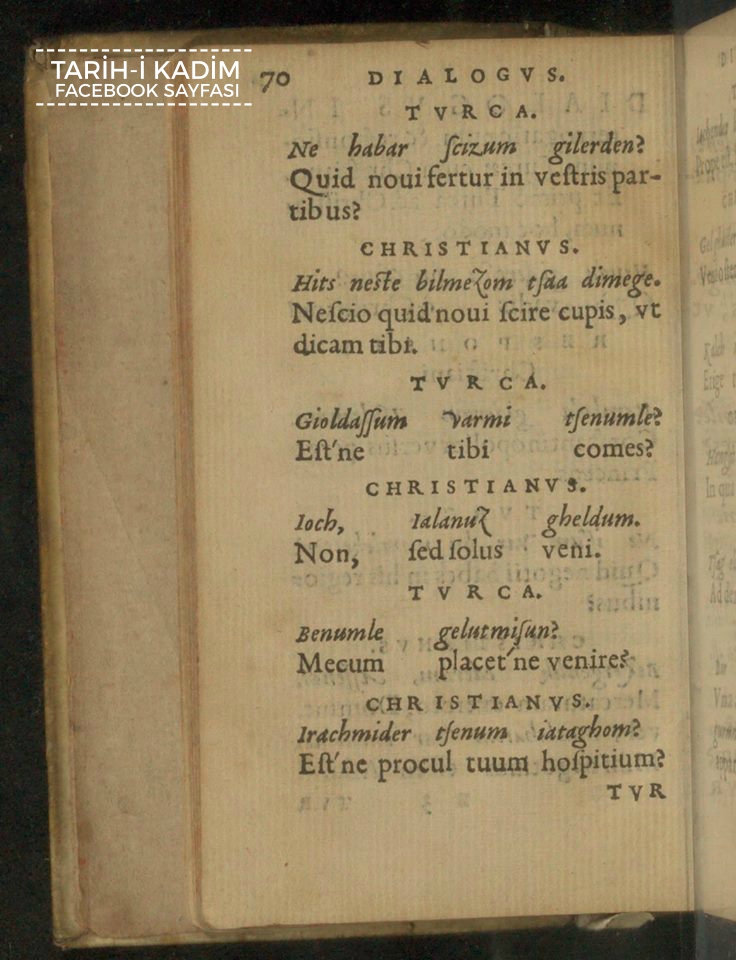Archive for Writing systems
September 29, 2016 @ 6:28 pm· Filed by Victor Mair under Alphabets, Borrowing, Language and art, Writing systems
A little over a year ago, we had our first look at "Konglish", Korean-style English. If it was thriving then, it seems to be positively luxuriant now:
"The Beauty and Perils of Konglish, the Korean-English Hybrid" (Margaret Rhodes, WIRED, 9/29/16)
Read the rest of this entry »
Permalink
September 20, 2016 @ 5:50 pm· Filed by Victor Mair under Topolects, Writing, Writing systems
[This, a guest post by Lañitri Kirinputra, is the fourth and last in a series of four posts on Hokkien and related Southern Min / Minnan language issues. The first was "Eurasian eureka" (9/12/16), the second was "Hokkien in Singapore" (9/16/16), and the third was "Hoklo" (9/18/16).]
Read the rest of this entry »
Permalink
September 3, 2016 @ 8:31 am· Filed by Victor Mair under Writing, Writing systems
From Brendan Corney, a Chinese teacher in Melbourne, Australia, who relays a good anecdote of how bad character amnesia has gotten among native speakers:
Read the rest of this entry »
Permalink
September 1, 2016 @ 8:02 pm· Filed by Victor Mair under Signs, Writing systems
Tal Kedem saw this sign the other day while walking with his son to a local playground. It's for a newly opened restaurant on 9th street in New York's East Village.

Read the rest of this entry »
Permalink
August 29, 2016 @ 12:13 pm· Filed by Victor Mair under Transcription, Translation, Writing systems
In "Türkçe'nin 500 Yıl Önce Latin Harfleriyle Yazılışı" (7/26/16), Abdurrahman Onur Çalışır presents a Turkish text written in Latin letters together with a translation into Latin:

Read the rest of this entry »
Permalink
August 26, 2016 @ 6:43 pm· Filed by Victor Mair under Phonetics and phonology, Writing, Writing systems
Founded in 1858, Keio is the oldest university in Japan and one of the best, also ranking high in world ratings. Its name is written 慶應 in kanji. That's a lot of strokes to scribble down every time you want to write the name of your university, so Keio people often write it this way: 广+K 广+O (imagine that the "K" and the "O" are written inside of the 广). That makes 6 strokes and 4 strokes instead of 15 strokes and 17 strokes respectively, 10 strokes total instead of 32.
Read the rest of this entry »
Permalink
August 19, 2016 @ 4:44 pm· Filed by Ben Zimmer under Errors, Language and the movies, Writing systems
A few days ago I posted the trailer for the forthcoming science-fiction movie "Arrival," based on Ted Chiang's linguistically rich tale of alien contact, "Story of Your Life." While most commenters have wondered how well Chiang's xenolinguistics will translate to the big screen, a couple of eagle-eyed observers noted something worrying in the trailer: incredibly sloppy use of Arabic script.

Read the rest of this entry »
Permalink
August 13, 2016 @ 3:40 am· Filed by Victor Mair under Diglossia and digraphia, Language and literature, Writing, Writing systems
Chang Li-ching (my wife) wrote her childhood memoirs in Hanyu Pinyin (Romanized Mandarin):
Pīnyīn Rìjì Duǎnwén (Pinyin Diary Essays).
Li-ching specifically did NOT want her memoirs published in hanzi (Chinese characters). She was passionately devoted to farmers and workers — like John DeFrancis — and she wrote her memoirs in Pinyin as a testimony of her devotion to them.
Read the rest of this entry »
Permalink
August 9, 2016 @ 7:48 am· Filed by Victor Mair under Diglossia and digraphia, Grammar, Writing systems
From B JS:
Some interesting uses of the Roman letter third person pronoun “TA” to sidestep genders associated with the characters tā 他 ("he") and tā 她 ("she"); it seems useful enough to perhaps become a permanent fixture in the language, in contrast to more faddish-seeming things like “duang” (see here and here). I kind of wish you could do this in English.

Read the rest of this entry »
Permalink
August 6, 2016 @ 7:57 pm· Filed by Victor Mair under Borrowing, Language and food, Phonetics and phonology, Writing systems
Translators of Chinese poetry are tormented by how to render the term jiǔ 酒. The nearly universal English rendering of jiǔ 酒 in Chinese belles lettres is "wine". The problem is that "wine" is fruit based (usually grapes), whereas jiǔ 酒 is grain based.
This is a topic that has come up tangentially on Language Log many times in the past (see below for some references). I am revisiting it now because, in the fall, I will be participating in an event in New York having to do with tea and wine. In the minds of those who know Chinese, that will be framed in terms of chá 茶 and jiǔ 酒.
Read the rest of this entry »
Permalink
August 4, 2016 @ 6:52 am· Filed by Mark Liberman under Language and culture, Writing systems
Below is a guest post by Bob Ladd:
Recent events in Turkey have meant that President Erdoğan is in headlines around the world – except that in many parts of the world, the headlines are about President “Erdogan”. A few newspapers outside Turkey faithfully reproduce the yumuşak G (the letter G with a short mark or caron, which between vowels is mostly silent in Turkish), but mostly they just use an unadorned G. So is this a matter of technology or ethnocentricity? That is, do newspapers ignore the diacritic on the G because inserting the correct character would be a time-consuming and potentially error-prone process? Or do they ignore it because it’s a weird letter in a weird language and nobody really cares anyway? There’s a lot of evidence to suggest that both factors play a role.
Read the rest of this entry »
Permalink
July 26, 2016 @ 11:27 pm· Filed by Victor Mair under Borrowing, Language and politics, Names, Topolects, Transcription, Writing systems
BBC News has a nice article by Tzu-Wei Liu on "The politics of a martial arts book fair in Hong Kong" (7/26/16). The article is accompanied by six photographs; I will focus on the two that interest me most (because they are both language related), the third and the sixth.
Here's the third photograph:

Read the rest of this entry »
Permalink
July 26, 2016 @ 10:37 am· Filed by Victor Mair under Abbreviation, Alphabets, Language and culture, Language and food, Language and society, Words words words, Writing systems
No matter where I go these days, I hear young people shouting to their friends, "I'm playing Pokémon Go", which they pronounce "pokey-mon go". It would be an understatement to say that, for the past few weeks, Pokémon Go has been a veritable craze. Yet most people who play the game probably do not realize that the name "Pokémon" is a Japanese portmanteau based on two English words: poketto ポケット ("pocket") + monsutā モンスター ("monster").
"What's in a name — Pikachu, Beikaciu, Pikaqiu?" (5/31/16)
Read the rest of this entry »
Permalink




